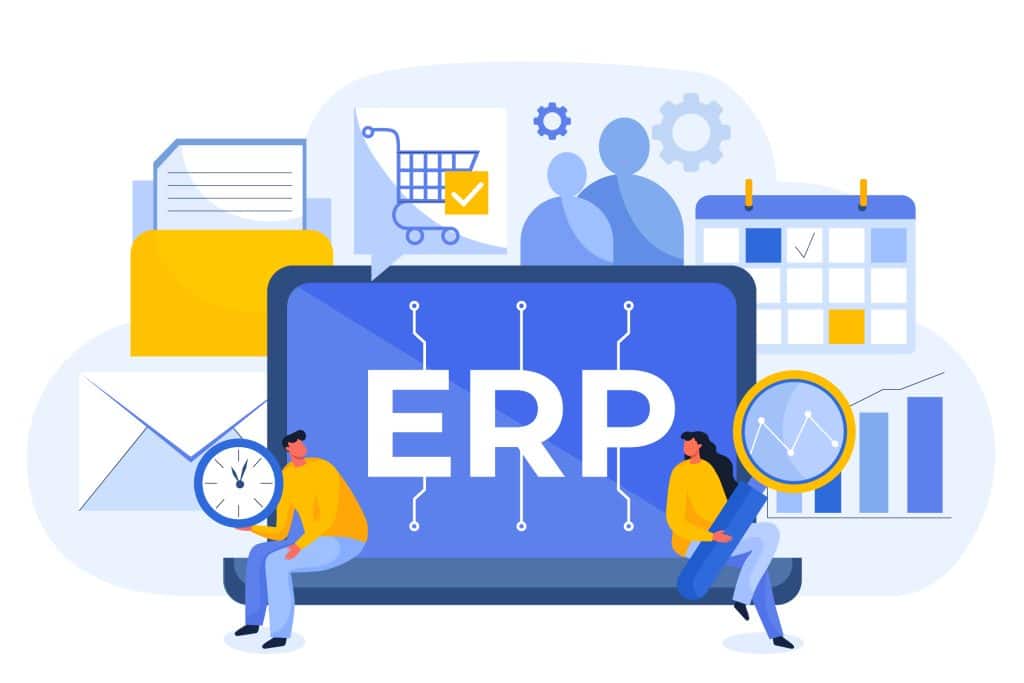An ERP system acts like the technological brain of a company’s operations. It can process huge amounts of information about the daily operations of a business, it provides valuable feedback to all areas of the business, and it provides intelligence on everything from stock movements and demand forecasting to sales and marketing activity, accounting, human resources and more. Strong ERP software can help you win more customers, remain competitive, manage costs better and improve business performance.
With everything that an ERP can do, ensuring the success of an implementation project becomes the top priority once the decision has been made to undertake an ERP implementation. Here are the top reasons why ERP implementations fail, and what you can do to ensure success.
Knowing What You Want to Achieve


Before getting started, make sure you evaluate the current pain points and big wins you want to resolve by using an ERP system. Talk to your staff about what’s causing them the most pain in their day-to-day operations and identify the recurring issues and biggest potential time-savers. Then, speak to your ERP provider about what’s causing your business unnecessary time and pain. Make sure your ERP provider can give you the advice and solutions you’re looking for to bring the improvements your business needs.
See our article on ERP time savers for ideas on some of the ways ERP systems can save your business time and money.
Defining the Expectations
Setting the right expectations early on is imperative. Opening a dialogue with your staff about the expectations of an ERP project can remind them that they’re part of the journey and help build enthusiasm and momentum within the business. It also gives you the chance to clarify what’s needed from them and what the whole business can hope to gain.
Defining your expectations also helps you talk to your ERP provider about what you want to achieve. It will establish the responsibilities during the project and make sure everyone knows who will be doing what – before you even get started. It also helps crystallise what’s in or out of scope. There’s nothing worse than getting to the end of an implementation, feeling there’s still more to be done but knowing it wasn’t planned for.
The Need for Expertise


Trying to manage an ERP implementation on your own can be like driving without a license. You may get out of the garage, but there’s risk at every turn once you’re on the road. One wrong action can be disastrous, and there’s no insurance to fall back on.
Having a team of experts manage and go through the implementation with you can save you a lot of time, pain, and additional costs in fixing or re-implementing your ERP system in the long-run.
Cutting Corners
ERP isn’t a short-term solution. It can bring a better way of doing business, improved process efficiencies and boost business performance. Considering the benefits ERP can bring when done right, cutting corners with the implementation creates a huge risk.
Companies wanting to start with as few implementation hours as possible should take a step back at this point and ask what they want to achieve with an ERP system – and what kind of return they want to see from their investment. Is it being undertaken as a quick fix, or as a long-term solution that will continue providing benefit to the business well into the future? For more details on implementation timelines, read our article on how long does ERP implementation take.
The reality is that ERP implementation takes time and resources. It’s an investment in setting up an ERP system that will effectively run your business. Companies wanting to start with as few implementation hours as possible should take a step back at this point and ask they want to achieve with an ERP system – and what kind of return they want to see from their investment. Is it being undertaken as a quick fix, or as a long-term solution that will continue providing benefit to the business well into the future?
Choosing the Best Solution


When you’re talking with an ERP provider, ask about their software’s strengths and what type of businesses they deal with the most. Also, find out about other, similar businesses which are using their software. Look for proof of success with case studies and pay close attention to the benefits others have realised through using the software. There may even be improvements you haven’t considered yet and can include in your own scope of implementation.
See our free infographic with more tips on what you need to know when choosing the right ERP software.
Businesses can be as individual as people. There are often unique requirements and processes which have been developed over the business’ lifetime. These requirements need to be considered for the new ERP system you implement. Some ERP solutions have strengths that work particularly well for Wholesale Distribution businesses, whereas others may be more focused towards service-based businesses. Make sure you’re matching the solution to your company’s individual needs, and consider tailoring NetSuite ERP to unique industry needs to ensure a perfect fit.
On the other hand, when you’re talking with an ERP provider, ask about their software’s strengths and what type of businesses they deal with the most. Also, find out about other, similar businesses which are using their software. Look for proof of success with case studies and pay close attention to the benefits others have realised through using the software. Understanding how NetSuite ERP adapts from retail to manufacturing can provide insights into its versatility and how it may cater to the diverse needs of your business.
Resistance to Change
Some employees thrive on learning and adapting to change, whereas others are more comfortable when they know a process like the back of their hands. Putting a new ERP system in place can be a challenge for the latter, as it presents a learning curve and sometimes adaptation to more efficient processes and ways of managing the same tasks. But this doesn’t have to be worrying.
If you’ve involved your staff early on and engaged them in open dialogue about the ERP system you’re looking to implement, everyone will be aware of the positive changes coming. Make sure your staff feel comfortable providing their feedback and are involved in the process. You can also appoint some of your more adaptable team members as “super users”, being the go-to people for quick questions.
Working with an ERP solution provider with an experienced ERP support team available to users also reassures everyone that they won’t be left to fend for themselves once the system is in place. Be sure to talk to your provider about the support they offer and whether they have phone-based support in addition to email or ticket-based support.
Careful consideration with a system that will act as the brain of your company’s operations is a wise move. There’s much to bear in mind but a little planning can go a long way towards avoiding failure and seeing a successful implementation. Start out by clearly defining what you want to achieve from an implementation and set the expectations – both internally and with your ERP provider. Invest in the expert resources you need and remember that it’s a long-term solution that will continue providing benefit to the business well into the future. Choose the software that’s right for your specific business. Get your staff involved, listen to their feedback and make sure they feel supported by an ERP provider that will be there for them after the implementation is completed.
To get more ideas from successful businesses who have been through an ERP implementation, see our article on how businesses have succeeded with ERP, which includes several case studies to learn from.
JCurve Solutions provides a number of cloud ERP software solutions for businesses of all sizes. If you’d like to know more, get in touch to start a conversation about seeing a more successful ERP implementation for your business.









